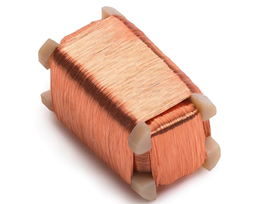Almost no industry doesn’t use an intricate mix of electromagnetic charged coils in its field. From the confinements of a laboratory to a large power plant, coils find their use in almost all sorts of streams. A significant reason why these coils are so widely applied is because of their design and usability. A microscopic mix of the coil can perform a similar task on a smaller level, identical to a giant design of an electromagnetic coil. Hence, coils are widely and more efficiently found useful in various industries, including the medical sciences, mostly as sensors.
As described by Ampere’s Law, a magnetic field produces when current flows through a conductor. These are the same principles on which the electromagnetic coil design is made.
The coils perform in dual capacities to conduct electromagnetic charges when current flows through them and do quite the opposite, which would be to conduct electricity when magnetic charges pass through. This way, coils find unrestricted in their functionality and find useful in varied fields in the capacity ranging from sensors, transformers, and inductors.
Talking a little more about the electromagnetic coil design, developing them is not an easy task. For a set of wires to be electromagnetically charged, they arrange in a particular manner. Coiled multiple times in a specific helix that makes concentrating the magnetic field effortlessly. Varied factors, including the amount of resistance, the strength of these coils, and more considered before functioning them together. These aspects depend on how the coils use as a result. In some cases, the magnetic field requires a different focus, which needs an external core to place at the coil system’s center.
Such a useful device, the coil finds useful mainly in the medical field in devices that require an active sensor. Their application ranges from simple treatments to diagnostics of microscopic anomalies in the body. However, manufacturers of electromagnetic coil design are facing an array of difficulties as we speak. What can restrict such brilliant developments to be available for the world? Here are they:
- The production process can be both time and money-consuming. Each device requires a different shape and design of these coils. So, if not produced in a mass quantity, there is no way the manufacturer can sell at a reasonable price.
- The room for human errors is next to zero. These coils use in diagnostics and cannot be more sure about their function until they are 100% ready to use. Hence, manufacturers cannot effort a single error.
- There is also no room for compromise on the quality of the coils. They apply in devices that aid people with their hearing or breathing difficulty. You want the device to last as long as possible. Hence, quality is of utmost priority.
Similar challenges are restricting many manufacturers from moving ahead with the idea. Finding new clients for such companies is becoming difficult. But that’s not the end of the line, and as time progresses, more doors open.











